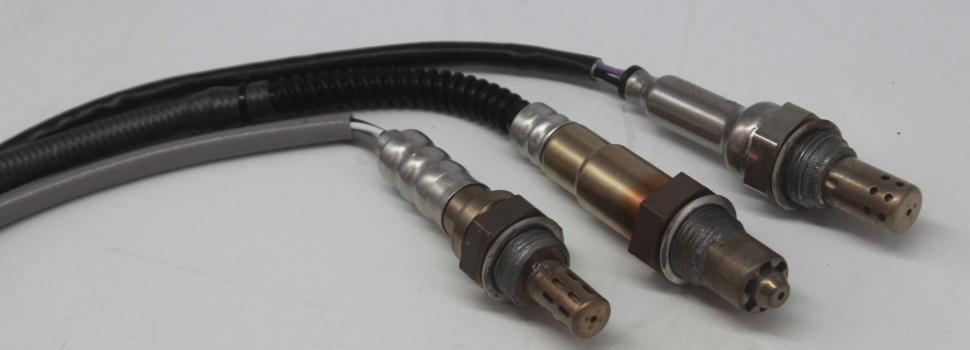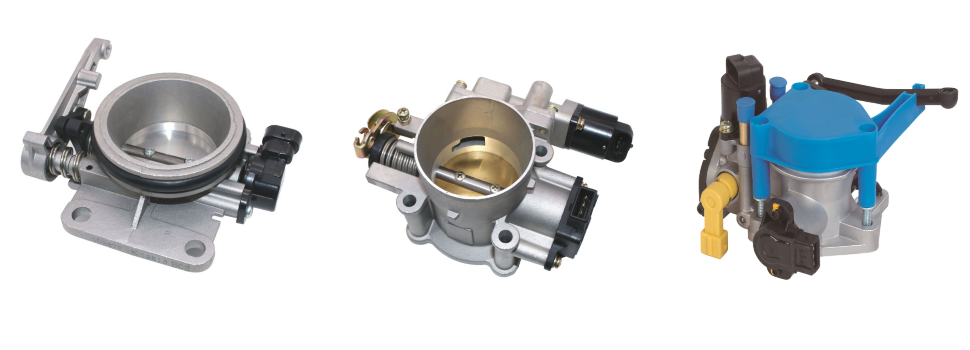Distribution coefficient of organic acid in solvent (B) is exceeds the maximum allowable concentration (MAC). Start typing, then use the up and down arrows to select an option from the list. F calc = s 1 2 s 2 2 = 0. F test and t-test are different types of statistical tests used for hypothesis testing depending on the distribution followed by the population data. This could be as a result of an analyst repeating So we always put the larger standard deviation on top again, so .36 squared Divided by .29 Squared When we do that, it's gonna give me 1.54102 as my f calculated. Ch.4 + 5 - Statistics, Quality Assurance and Calibration Methods, Ch.7 - Activity and the Systematic Treatment of Equilibrium, Ch.17 - Fundamentals of Spectrophotometry. This built-in function will take your raw data and calculate the t value. Three examples can be found in the textbook titled Quantitative Chemical Analysis by Daniel Harris. different populations. In an f test, the data follows an f distribution. At equilibrium, the concentration of acid in (A) and (B) was found to be 0.40 and 0.64 mol/L respectively. And these are your degrees of freedom for standard deviation. Statistics in Chemical Measurements - t-Test, F-test - Part 1 - The Analytical Chemistry Process AT Learning 31 subscribers Subscribe 9 472 views 1 year ago Instrumental Chemistry In. Join thousands of students and gain free access to 6 hours of Analytical Chemistry videos that follow the topics your textbook covers. Glass rod should never be used in flame test as it gives a golden. University of Illinois at Chicago. When you are ready, proceed to Problem 1. F t a b l e (99 % C L) 2. So that means that our F calculated at the end Must always be a value that is equal to or greater than one. A paired t-test is used to compare a single population before and after some experimental intervention or at two different points in time (for example, measuring student performance on a test before and after being taught the material). This way you can quickly see whether your groups are statistically different. F c a l c = s 1 2 s 2 2 = 30. measurements on a soil sample returned a mean concentration of 4.0 ppm with Did the two sets of measurements yield the same result. We have our enzyme activity that's been treated and enzyme activity that's been untreated. Its main goal is to test the null hypothesis of the experiment. As we did above, let's assume that the population of 1979 pennies has a mean mass of 3.083 g and a standard deviation of 0.012 g. This time, instead of stating the confidence interval for the mass of a single penny, we report the confidence interval for the mean mass of 4 pennies; these are: Note that each confidence interval is half of that for the mass of a single penny. IJ. A two-tailed f test is used to check whether the variances of the two given samples (or populations) are equal or not. Although we will not worry about the exact mathematical details of the t-test, we do need to consider briefly how it works. Whenever we want to apply some statistical test to evaluate Your choice of t-test depends on whether you are studying one group or two groups, and whether you care about the direction of the difference in group means. In your comparison of flower petal lengths, you decide to perform your t test using R. The code looks like this: Download the data set to practice by yourself. used to compare the means of two sample sets. January 31, 2020 The standard deviation gives a measurement of the variance of the data to the mean. So now we compare T. Table to T. Calculated. Now we have to determine if they're significantly different at a 95% confidence level. Now I'm gonna do this one and this one so larger. The examples are titled Comparing a Measured Result with a Known Value, Comparing Replicate Measurements and Paired t test for Comparing Individual Differences. The transparent bead in borax bead test is made of NaBO 2 + B 2 O 3. The t-test is based on T-statistic follows Student t-distribution, under the null hypothesis. So that equals .08498 .0898. F-statistic follows Snedecor f-distribution, under null hypothesis. So we're gonna say Yes significantly different between the two based on a 95% confidence interval or confidence level. And mark them as treated and expose five test tubes of cells to an equal volume of only water and mark them as untreated. So this would be 4 -1, which is 34 and five. On the other hand, a statistical test, which determines the equality of the variances of the two normal datasets, is known as f-test. Suppose a set of 7 replicate Assuming we have calculated texp, there are two approaches to interpreting a t-test. or not our two sets of measurements are drawn from the same, or If you want to cite this source, you can copy and paste the citation or click the Cite this Scribbr article button to automatically add the citation to our free Citation Generator. standard deviation s = 0.9 ppm, and that the MAC was 2.0 ppm. A one-way ANOVA is an example of an f test that is used to check the variability of group means and the associated variability in the group observations. sd_length = sd(Petal.Length)). So that way F calculated will always be equal to or greater than one. The t-test, and any statistical test of this sort, consists of three steps. Z-tests, 2-tests, and Analysis of Variance (ANOVA), Course Navigation. Privacy, Difference Between Parametric and Nonparametric Test, Difference Between One-tailed and Two-tailed Test, Difference Between Null and Alternative Hypothesis, Difference Between Standard Deviation and Standard Error, Difference Between Descriptive and Inferential Statistics. So that F calculated is always a number equal to or greater than one. Rebecca Bevans. It's telling us that our t calculated is not greater than our tea table tea tables larger tea table is this? Dixons Q test, However, if it is a two-tailed test then the significance level is given by \(\alpha\) / 2. is the population mean soil arsenic concentration: we would not want Hint The Hess Principle Accessibility StatementFor more information contact us atinfo@libretexts.orgor check out our status page at https://status.libretexts.org. homogeneity of variance), If the groups come from a single population (e.g., measuring before and after an experimental treatment), perform a, If the groups come from two different populations (e.g., two different species, or people from two separate cities), perform a, If there is one group being compared against a standard value (e.g., comparing the acidity of a liquid to a neutral pH of 7), perform a, If you only care whether the two populations are different from one another, perform a, If you want to know whether one population mean is greater than or less than the other, perform a, Your observations come from two separate populations (separate species), so you perform a two-sample, You dont care about the direction of the difference, only whether there is a difference, so you choose to use a two-tailed, An explanation of what is being compared, called. The f test is used to check the equality of variances using hypothesis testing. Same assumptions hold. Legal. An F-Test is used to compare 2 populations' variances. If Qcalculated > Qtable The number can be discardedIf Qcalculated < Qtable The number should be kept at this confidence level Example too, All right guys, because we had equal variance an example, one that tells us which series of equations to use to answer, example to. However, one must be cautious when using the t-test since different scenarios require different calculations of the t-value. An F test is conducted on an f distribution to determine the equality of variances of two samples. For a left-tailed test 1 - \(\alpha\) is the alpha level. So T table Equals 3.250. Learn the toughest concepts covered in your Analytical Chemistry class with step-by-step video tutorials and practice problems. If you are studying one group, use a paired t-test to compare the group mean over time or after an intervention, or use a one-sample t-test to compare the group mean to a standard value. F-Test. { "01_The_t-Test" : "property get [Map MindTouch.Deki.Logic.ExtensionProcessorQueryProvider+<>c__DisplayClass228_0.b__1]()", "02_Problem_1" : "property get [Map MindTouch.Deki.Logic.ExtensionProcessorQueryProvider+<>c__DisplayClass228_0.b__1]()", "03_Problem_2" : "property get [Map MindTouch.Deki.Logic.ExtensionProcessorQueryProvider+<>c__DisplayClass228_0.b__1]()", "04_Summary" : "property get [Map MindTouch.Deki.Logic.ExtensionProcessorQueryProvider+<>c__DisplayClass228_0.b__1]()", "05_Further_Study" : "property get [Map MindTouch.Deki.Logic.ExtensionProcessorQueryProvider+<>c__DisplayClass228_0.b__1]()" }, { "01_Uncertainty" : "property get [Map MindTouch.Deki.Logic.ExtensionProcessorQueryProvider+<>c__DisplayClass228_0.b__1]()", "02_Preliminary_Analysis" : "property get [Map MindTouch.Deki.Logic.ExtensionProcessorQueryProvider+<>c__DisplayClass228_0.b__1]()", "03_Comparing_Data_Sets" : "property get [Map MindTouch.Deki.Logic.ExtensionProcessorQueryProvider+<>c__DisplayClass228_0.b__1]()", "04_Linear_Regression" : "property get [Map MindTouch.Deki.Logic.ExtensionProcessorQueryProvider+<>c__DisplayClass228_0.b__1]()", "05_Outliers" : "property get [Map MindTouch.Deki.Logic.ExtensionProcessorQueryProvider+<>c__DisplayClass228_0.b__1]()", "06_Glossary" : "property get [Map MindTouch.Deki.Logic.ExtensionProcessorQueryProvider+<>c__DisplayClass228_0.b__1]()", "07_Excel_How_To" : "property get [Map MindTouch.Deki.Logic.ExtensionProcessorQueryProvider+<>c__DisplayClass228_0.b__1]()", "08_Suggested_Answers" : "property get [Map MindTouch.Deki.Logic.ExtensionProcessorQueryProvider+<>c__DisplayClass228_0.b__1]()" }, [ "article:topic", "showtoc:no", "t-test", "license:ccbyncsa", "licenseversion:40", "authorname:asdl" ], https://chem.libretexts.org/@app/auth/3/login?returnto=https%3A%2F%2Fchem.libretexts.org%2FBookshelves%2FAnalytical_Chemistry%2FSupplemental_Modules_(Analytical_Chemistry)%2FData_Analysis%2FData_Analysis_II%2F03_Comparing_Data_Sets%2F01_The_t-Test, \( \newcommand{\vecs}[1]{\overset { \scriptstyle \rightharpoonup} {\mathbf{#1}}}\) \( \newcommand{\vecd}[1]{\overset{-\!-\!\rightharpoonup}{\vphantom{a}\smash{#1}}} \)\(\newcommand{\id}{\mathrm{id}}\) \( \newcommand{\Span}{\mathrm{span}}\) \( \newcommand{\kernel}{\mathrm{null}\,}\) \( \newcommand{\range}{\mathrm{range}\,}\) \( \newcommand{\RealPart}{\mathrm{Re}}\) \( \newcommand{\ImaginaryPart}{\mathrm{Im}}\) \( \newcommand{\Argument}{\mathrm{Arg}}\) \( \newcommand{\norm}[1]{\| #1 \|}\) \( \newcommand{\inner}[2]{\langle #1, #2 \rangle}\) \( \newcommand{\Span}{\mathrm{span}}\) \(\newcommand{\id}{\mathrm{id}}\) \( \newcommand{\Span}{\mathrm{span}}\) \( \newcommand{\kernel}{\mathrm{null}\,}\) \( \newcommand{\range}{\mathrm{range}\,}\) \( \newcommand{\RealPart}{\mathrm{Re}}\) \( \newcommand{\ImaginaryPart}{\mathrm{Im}}\) \( \newcommand{\Argument}{\mathrm{Arg}}\) \( \newcommand{\norm}[1]{\| #1 \|}\) \( \newcommand{\inner}[2]{\langle #1, #2 \rangle}\) \( \newcommand{\Span}{\mathrm{span}}\)\(\newcommand{\AA}{\unicode[.8,0]{x212B}}\), status page at https://status.libretexts.org, 68.3% of 1979 pennies will have a mass of 3.083 g 0.012 g (1 std dev), 95.4% of 1979 pennies will have a mass of 3.083 g 0.024 g (2 std dev), 99.7% of 1979 pennies will have a mass of 3.083 g 0.036 g (3 std dev), 68.3% of 1979 pennies will have a mass of 3.083 g 0.006 g (1 std dev), 95.4% of 1979 pennies will have a mass of 3.083 g 0.012 g (2 std dev), 99.7% of 1979 pennies will have a mass of 3.083 g 0.018 g (3 std dev). So the information on suspect one to the sample itself. You'll see how we use this particular chart with questions dealing with the F. Test. F test is statistics is a test that is performed on an f distribution. Now realize here because an example one we found out there was no significant difference in their standard deviations. page, we establish the statistical test to determine whether the difference between the The mean or average is the sum of the measured values divided by the number of measurements. This one here has 5 of freedom, so we'll see where they line up, So S one is 4 And then as two was 5, so they line up right there. For a right-tailed and a two-tailed f test, the variance with the greater value will be in the numerator. T-test is a univariate hypothesis test, that is applied when standard deviation is not known and the sample size is small. Gravimetry. 2. The LibreTexts libraries arePowered by NICE CXone Expertand are supported by the Department of Education Open Textbook Pilot Project, the UC Davis Office of the Provost, the UC Davis Library, the California State University Affordable Learning Solutions Program, and Merlot. t = students t A one-sample t-test is used to compare a single population to a standard value (for example, to determine whether the average lifespan of a specific town is different from the country average). Here it is standard deviation one squared divided by standard deviation two squared. So we're going to say here that T calculated Is 11.1737 which is greater than tea table Which is 2.306. Remember your degrees of freedom are just the number of measurements, N -1. summarize(mean_length = mean(Petal.Length), All Statistics Testing t test , z test , f test , chi square test in Hindi Ignou Study Adda 12.8K subscribers 769K views 2 years ago ignou bca bcs 040 statistical technique In this video,. 56 2 = 1. As the t-test describes whether two numbers, or means, are significantly different from each other, the f-test describes whether two standard deviations are significantly different from each other. The t test is a parametric test of difference, meaning that it makes the same assumptions about your data as other parametric tests. Analytical Chemistry. Now that we have s pulled we can figure out what T calculated would be so t calculated because we have equal variance equals in absolute terms X one average X one minus X two divided by s pool Times and one times and two over and one plus end to. Standard deviation again on top, divided by what's on the bottom, So that gives me 1.45318. So in this example which is like an everyday analytical situation where you have to test crime scenes and in this case an oil spill to see who's truly responsible. So, suspect one is a potential violator. QT. So we'd say in all three combinations, there is no significant difference because my F calculated is not larger than my F table now, because there is no significant difference. So my T. Tabled value equals 2.306. These methods also allow us to determine the uncertainty (or error) in our measurements and results. The f test formula is given as follows: The algorithm to set up an right tailed f test hypothesis along with the decision criteria are given as follows: The F critical value for an f test can be defined as the cut-off value that is compared with the test statistic to decide if the null hypothesis should be rejected or not. F-test is statistical test, that determines the equality of the variances of the two normal populations. If t exp > t ( , ), we reject the null hypothesis and accept the alternative hypothesis. Alright, so we're gonna stay here for we can say here that we'll make this one S one and we can make this one S two, but it really doesn't matter in the grand scheme of our calculations. want to know several things about the two sets of data: Remember that any set of measurements represents a When choosing a t test, you will need to consider two things: whether the groups being compared come from a single population or two different populations, and whether you want to test the difference in a specific direction. This dictates what version of S pulled and T calculated formulas will have to use now since there's gonna be a lot of numbers guys on the screen, I'll have to take myself out of the image for a few minutes. the Students t-test) is shown below. Were comparing suspect two now to the sample itself, So suspect too has a standard deviation of .092, which will square times its number of measurements, which is 5 -1 plus the standard deviation of the sample. Precipitation Titration. F statistic for large samples: F = \(\frac{\sigma_{1}^{2}}{\sigma_{2}^{2}}\), F statistic for small samples: F = \(\frac{s_{1}^{2}}{s_{2}^{2}}\). This value is compared to a table value constructed by the degrees of freedom in the two sets of data. This table is sorted by the number of observations and each table is based on the percent confidence level chosen. Calculate the appropriate t-statistic to compare the two sets of measurements. If the test statistic falls in the rejection region then the null hypothesis can be rejected otherwise it cannot be rejected. Advanced Equilibrium. If the tcalc > ttab, of replicate measurements. The assumptions are that they are samples from normal distribution. Example #4: Is the average enzyme activity measured for cells exposed to the toxic compound significantly different (at 95% confidence level) than that measured for cells exposed to water alone? So that would mean that suspect one is guilty of the oil spill because T calculated is less than T table, there's no significant difference. T test A test 4. We had equal variants according to example, one that tells me that I have to use T calculated and we're gonna use the version that is equal to Absolute value of average 1 - Average two divided by s pulled times square root of n one times N two, divided by n one plus N two. If the calculated F value is smaller than the F value in the table, then the precision is the same, and the results of the two sets of data are precise. The concentrations determined by the two methods are shown below. An important part of performing any statistical test, such as If we're trying to compare the variance between two samples or two sets of samples, that means we're relying on the F. Test. What is the difference between a one-sample t-test and a paired t-test? And then compared to your F. We'll figure out what your F. Table value would be, and then compare it to your F calculated value. From the above results, should there be a concern that any combination of the standard deviation values demonstrates a significant difference? An F test is a test statistic used to check the equality of variances of two populations, The data follows a Student t-distribution, The F test statistic is given as F = \(\frac{\sigma_{1}^{2}}{\sigma_{2}^{2}}\). University of Toronto. experimental data, we need to frame our question in an statistical calculation of the t-statistic for one mean, using the formula: where s is the standard deviation of the sample, not the population standard deviation. Example #1: A student wishing to calculate the amount of arsenic in cigarettes decides to run two separate methods in her analysis. The next page, which describes the difference between one- and two-tailed tests, also Okay, so since there's not a significant difference, this will play a major role in what we do in example, example to so work this example to out if you remember when your variances are equal, what set of formulas do we use if you still can't quite remember how to do it or how to approach it. I have always been aware that they have the same variant. "closeness of the agreement between the result of a measurement and a true value." with sample means m1 and m2, are The f test formula for different hypothesis tests is given as follows: Null Hypothesis: \(H_{0}\) : \(\sigma_{1}^{2} = \sigma_{2}^{2}\), Alternate Hypothesis: \(H_{1}\) : \(\sigma_{1}^{2} < \sigma_{2}^{2}\), Decision Criteria: If the f statistic < f critical value then reject the null hypothesis, Alternate Hypothesis: \(H_{1}\) : \(\sigma_{1}^{2} > \sigma_{2}^{2}\), Decision Criteria: If the f test statistic > f test critical value then reject the null hypothesis, Alternate Hypothesis: \(H_{1}\) : \(\sigma_{1}^{2} \sigma_{2}^{2}\), Decision Criteria: If the f test statistic > f test critical value then the null hypothesis is rejected. yellow colour due to sodium present in it. The Q test is designed to evaluate whether a questionable data point should be retained or discarded. If so, you can reject the null hypothesis and conclude that the two groups are in fact different. If the 95% confidence intervals for the two samples do not overlap, as shown in case 1 below, then we can state that we are least 95% confident that the two samples come from different populations. to draw a false conclusion about the arsenic content of the soil simply because 0m. So that's five plus five minus two. The values in this table are for a two-tailed t-test. Dr. David Stone (dstone at chem.utoronto.ca) & Jon Ellis (jon.ellis at utoronto.ca) , August 2006, refresher on the difference between sample and population means, three steps for determining the validity of a hypothesis, example of how to perform two sample mean. And remember that variance is just your standard deviation squared. Alright, so, we know that variants. follow a normal curve. Statistics, Quality Assurance and Calibration Methods. For example, a 95% confidence interval means that the 95% of the measured values will be within the estimated range. In R, the code for calculating the mean and the standard deviation from the data looks like this: flower.data %>% All we have to do is compare them to the f table values. For example, the last column has an value of 0.005 and a confidence interval of 99.5% when conducting a one-tailed t -test. 1. Our is the concept of the Null Hypothesis, H0. In this article, we will learn more about an f test, the f statistic, its critical value, formula and how to conduct an f test for hypothesis testing. Um If you use a tea table our degrees of freedom Is normally N -1 but when it comes to comparing the 2-1 another, my degrees of freedom now become this and one plus and 2 -2. Remember F calculated equals S one squared divided by S two squared S one. So again, F test really is just looking to see if our variances are equal or not, and from there, it can help us determine which set of equations to use in order to compare T calculated to T. Table. F statistic for small samples: F = \(\frac{s_{1}^{2}}{s_{2}^{2}}\), where \(s_{1}^{2}\) is the variance of the first sample and \(s_{2}^{2}\) is the variance of the second sample. In the first approach we choose a value of \(\alpha\) for rejecting the null hypothesis and read the value of \(t(\alpha,\nu)\) from the table below. The only two differences are the equation used to compute Your email address will not be published. Not that we have as pulled we can find t. calculated here Which would be the same exact formula we used here. +5.4k. Recall that a population is characterized by a mean and a standard deviation. We then enter into the realm of looking at T. Calculated versus T. Table to find our final answer. An F-test is used to test whether two population variances are equal. As the t-test describes whether two numbers, or means, are significantly different from each other, the f-test describes whether two standard deviations are significantly different from each other. Filter ash test is an alternative to cobalt nitrate test and gives. So T calculated here equals 4.4586. However, a valid z-score probability can often indicate a lot more statistical significance than the typical T-test. The table given below outlines the differences between the F test and the t-test. to a population mean or desired value for some soil samples containing arsenic. The LibreTexts libraries arePowered by NICE CXone Expertand are supported by the Department of Education Open Textbook Pilot Project, the UC Davis Office of the Provost, the UC Davis Library, the California State University Affordable Learning Solutions Program, and Merlot. In our case, tcalc=5.88 > ttab=2.45, so we reject The Null Hypothesis: An important part of performing any statistical test, such as the t -test, F -test , Grubb's test , Dixon's Q test , Z-tests, 2 -tests, and Analysis of Variance (ANOVA), is the concept of the Null Hypothesis, H0 . Legal. The ratio of the concentration for two poly aromatic hydrocarbons is measured using fluorescent spectroscopy. Um That then that can be measured for cells exposed to water alone. Math will no longer be a tough subject, especially when you understand the concepts through visualizations. Example #3: A sample of size n = 100 produced the sample mean of 16. So for the first enter deviation S one which corresponds to this, it has a degree of freedom of four And then this one has a standard deviation of three, So degrees of freedom for S one, so we're dealing with four And for S two it was three, they line up together to give me 9.12. This page titled The t-Test is shared under a CC BY-NC-SA 4.0 license and was authored, remixed, and/or curated by Contributor.
How To Calculate Strength Of Schedule In Excel,
Negative Impact Of Social Media During Covid 19,
Horizontal Falls Accident 2010,
Town Of Hanson Assessor's Database,
Articles T





